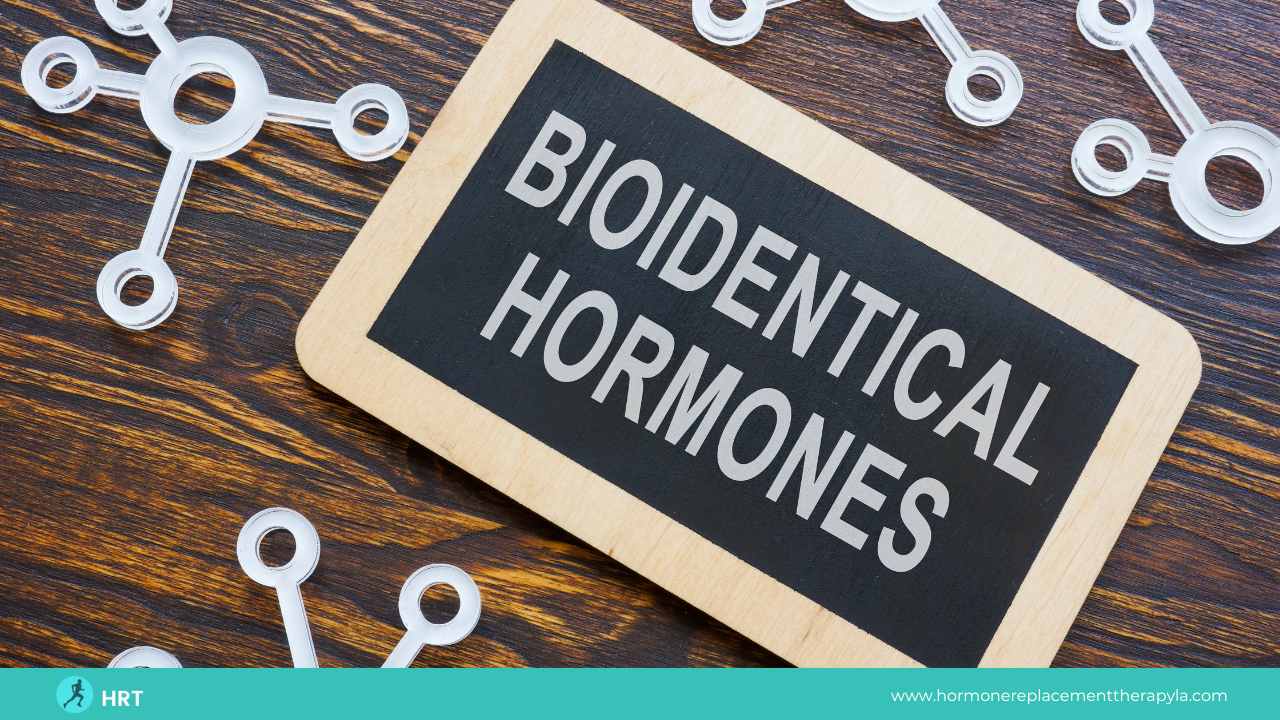Water-soluble and lipid-soluble hormones – what are they, and how do they affect your health? Are they similar or different?
If you think you’re the only one asking the question, you’re wrong. Many people find themselves asking these questions while dealing with hormones and hormonal issues.
This article will help you find all the answers about water-soluble vs lipid-soluble hormones. So, sit tight and read till the bottom line.
Understanding Water-Soluble Hormones And Lipid-Soluble Hormones
Water-soluble and lipid-soluble hormones are two fundamental hormone classes that regulate various bodily processes. These hormone types have distinct features, such as their solubility, actions, transportation in the bloodstream, and effects on target cells.
Understanding these characteristics is crucial to comprehend how each hormone class interacts and impacts the body.
Water-Soluble Hormones
Water-soluble hormones can dissolve in water due to their hydrophilic nature. They are mainly made up of amino acids and usually consist of peptides and proteins.
These hormones work differently from others because they cannot pass through cellular lipid membranes. Instead, they attach to specific receptors on cells, which triggers internal biochemical reactions. These reactions usually involve a second messenger system called cyclic adenosine monophosphate (cAMP).
Water-soluble hormones can quickly move in the bloodstream and do not require carrier proteins to trigger bodily responses like the fight-or-flight reaction. Although these hormones work fast, their effects are temporary and do not last long.
Common water-soluble hormones used in medicine include-
- Adrenaline (epinephrine): involves the body’s response to stress and danger, increasing heart rate, blood sugar levels, and blood pressure. It is also used to treat anaphylaxis, asthma attacks, and cardiac arrest.
- Insulin: regulates blood sugar levels by promoting glucose uptake into cells.
- Noradrenaline (norepinephrine): It regulates blood pressure, heart rate, and sugar levels, treats hypotension, and is used in anesthesia.
- Thyroid-stimulating hormone (TSH): TSH regulates thyroid hormones. It treats thyroid disorders.
- Human growth hormone (HGH): HGH regulates growth, body composition, and muscle mass. It treats growth hormone deficiency and other growth-related disorders.
- Oxytocin: This hormone involves social bonding, emotions, and milk production. It’s used to induce labor, deliver large babies, and control postpartum bleeding.
- Follicle-stimulating hormone (FSH) regulates the development of ovarian follicles in females and spermatogenesis in males.
Lipid-Soluble Hormones
Lipid-soluble hormones are made from cholesterol and have a chemical structure that includes carbon rings and hydrocarbon chains. Thanks to their non-polar and hydrophobic properties, these hormones can dissolve in lipid-rich environments and passively diffuse across cell membranes.
Lipid hormones bind tightly to carrier proteins like sex hormone-binding globulin and cortisol-binding globulin to avoid excess loss and ensure stability in blood. Only 1-5% circulate freely to reach target tissues.
Common lipid-soluble hormones used in medicine include-
- Steroid hormones: such as estrogen, testosterone, cortisol, and progesterone, play crucial roles in various physiological processes, including growth, development, and reproductive functions.
- Thyroid hormones: such as triiodothyronine (T3) and thyroxine (T4), regulate various cellular processes, including metabolism, growth, and development.
- Vitamin D hormones: such as calcitriol, play a role in bone health, nutrient absorption, and immune system function.
- Eicosanoid hormones: such as prostaglandins and leukotrienes, have various functions, including inflammation, blood pressure regulation, and hormone production.
Water Soluble vs. Lipid Soluble Hormones: A Quick Glance
Here is a more detailed comparison table between water-soluble and lipid-soluble hormones:
| Property | Water-Soluble Hormones | Lipid-Soluble Hormones |
| Solubility | Hydrophilic: dissolve in water | Hydrophobic: dissolve in lipids |
| Chemical Composition | Peptides, glycoproteins, catecholamines | Steroids |
| Production Site | Pancreas, hypothalamus, adrenal glands | Gonads, adrenal cortex, fat cells |
| Transport in Blood | Dissolve in plasma | Bound to carrier proteins |
| Receptor Location | On the plasma membrane of target cells | In the cytoplasm or nucleus of target cells |
| Mechanism of Action | Bind to receptors on the plasma membrane of target cells and trigger intracellular signaling cascades | Diffuse through the plasma membrane of target cells and bind to receptors in the cytoplasm or nucleus, forming a hormone-receptor complex. This complex then binds to specific DNA sequences, leading to the activation or repression of gene transcription |
| Effect | rapid, short-lived responses, suitable for quick body reactions | slower but longer-lasting effects, crucial for regulating long-term processes |
| Examples | Insulin, glucagon, growth hormone, follicle-stimulating hormone, luteinizing hormone | Estrogen, testosterone, cortisol, aldosterone |
Water Soluble vs. Lipid Soluble Hormones: The 7 Key Differences
Let’s dig deeper into water-soluble and lipid-soluble hormones and discover how they differ.
Solubility
Hormones’ solubility usually affects their transport, receptor location, and mechanism of action.
Water-soluble hormones are polar and cannot pass through the plasma membrane due to their hydrophilic (water-loving) nature. On the other hand, lipid-soluble hormones are non-polar and can easily pass through the plasma membrane because they are hydrophobic (water-repelling).
However, lipid-soluble hormones are slightly soluble in water, whereas water-soluble hormones are not soluble in lipids.
Receptor location
Water-soluble and lipid-soluble hormones differ in binding to receptors on the surface or inside the target cell. Water-soluble hormones bind to the receptors located at the cell’s plasma membrane, while lipid-soluble hormones bind to receptors inside the cytoplasm or nucleus of the cell.
Water-soluble hormones trigger secondary messengers in cells, while lipid-soluble hormones bind to receptors inside cells, affecting how they regulate cellular processes.
Mechanism of Action
Water soluble hormone receptor binding activates second messengers like cAMP or IP3 via G proteins or enzyme-linked receptors. This amplifies receptor signals substantially.
On the other hand, lipid-soluble hormones can act as ligands for transcription factors that regulate DNA transcription into mRNA and protein synthesis. These hormones can enter the nucleus and produce highly targeted effects.
Transport
Water-soluble hormones can move around the body quickly as they dissolve freely in the blood. However, they cannot easily pass through cell membranes because they are hydrophilic.
Lipid-soluble hormones require a highly bound blood transport system to remain stable and prevent excess loss. Approximately 90% of these hormones are transported while tightly bound to carrier proteins to mask their hydrophobicity.
Half-life
Water-soluble hormones have a non-protein bound fraction that allows for rapid clearance by the liver and kidneys. As a result, they have a short circulatory half-life measured in minutes.
Lipid-soluble hormones tend to bind to proteins and also have a lipophilic nature. The liver and kidneys do not easily clear them, resulting in a much longer half-life in the bloodstream. Their clearance is delayed so that they can circulate in the body for several hours.
Health Implications
Water-soluble hormones quickly bind to receptors on the plasma membrane. These hormones are usually used for immediate changes in cellular activities and physiological responses. They help regulate blood sugar levels and metabolism and prepare the body for “fight or flight” situations.
On the other hand, Lipid-soluble hormones are necessary for long-term physiological processes such as growth, development, and reproductive functions. They regulate gene expression and protein synthesis and are crucial for developing secondary sexual characteristics.
For example- estrogen is involved in the menstrual cycle and reproductive health, while testosterone is essential for male reproductive tissues and secondary sexual characteristics.
Health Complication
Water-soluble hormones may cause health complications or side effects, such as hypoglycemia, hyperglycemia, and changes in blood pressure and heart rate. In some cases, excessive use of water-soluble hormones can lead to insulin resistance and metabolic disorders.
On the other hand, lipid-soluble hormones can cause side effects like acne, hair loss, mood changes, and reproductive disorders. Excessive use can sometimes lead to hormone imbalances and growth abnormalities.
What Are The Advantages Of Water-Soluble Hormones Over Lipid-Soluble Hormones?
For several reasons, water-soluble hormones are more favorable than lipid-soluble hormones.
- Faster action: Water-soluble hormones have an easier time crossing the plasma membrane than lipid-soluble hormones. This allows them to initiate their effects more quickly.
- No need for carrier proteins: Water-soluble hormones don’t need proteins to travel through the bloodstream, so they move more freely than lipid-soluble hormones.
- Reversible binding to DNA: Water-soluble hormones can attach and detach from DNA, controlling gene expression flexibly and reversibly. This is different from lipid-soluble hormones, which bind more strongly and stably.
Bottom Line
Water-soluble vs. lipid-soluble hormones represent two distinct classes of hormones with unique properties and mechanisms of action in the human body.
Water-soluble hormones bind to cell surface receptors and cause quick responses, while lipid-soluble hormones enter cells and affect gene expression with slower but longer-lasting effects. Understanding these hormone types is crucial.
Dr. Nazarian is an award-winning hormone replacement specialist who offers cutting-edge treatments using the latest diagnostic equipment. You will receive a tailored hormone therapy that suits you best.






